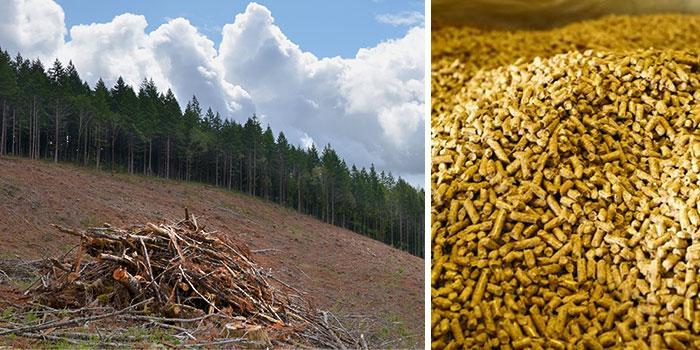

I joined the Oregon Forest Resources Institute in 2007, a few months after it completed a major study, Biomass Energy and Biofuels from Oregon’s Forests. This month, OFRI completed a new, up-to-date special report and video related to biomass usage around our state.
So what has changed in the past six years? Has the use of biomass – more specifically, woody biomass – entered a new era where it will solve the nation’s energy needs? Is it a bonanza – a new-wave energy for the future?
As our new special report notes: “Something old is new again.” As a fuel, there’s nothing new about biomass. Ask a caveman or a cavewoman, if only you could. It was a relatively simple, easy and reliable process for them to use wood for warmth and cooking. And so it was until the middle of the 19th century, when coal and other fossil fuels began to overtake the world’s wood-fueled economy.
So what has changed since 2006 when OFRI last wrote about biomass?
More than ever, sawmill owners have embraced the latest technology to use biomass in clean-burning boilers. Those boilers – using a locally sourced fuel – produce steam heat that dries lumber and reduces their bill for natural gas, a fossil fuel. Sized correctly for the available biomass resource, those boilers are also selling modest amounts of locally produced electricity to our utilities. That also reduces the need for fossil fuels.
And since 2006, especially on Oregon’s east side, local collaborative groups have begun finding ways to restore sickly, overly dense forests – thereby producing small diameter saw logs and biomass from tree tops and other spindly trees not suitable for milling. Some of it goes to boilers, but some of it also goes to produce pellets and biomass bricks that are heating schools, airports and other public buildings. Until recently, these buildings were wholly dependent on fossil fuels. And before the high-tech furnaces were installed, those fossil fuels needed to be trucked to rural areas at great expense.
Perhaps most tantalizing for the future of biomass is the potential for producing liquid fuels for powering cars, trucks and airplanes. It’s no longer a pie-in-the-sky concept. The sugars from breaking down woody biomass can be used to produce these fuels instead of using corn, which of course is food. Today it’s no longer a question of whether we can do this profitably; it’s a question of how profitably it can be accomplished relative to the cost of fossil fuels. Not a small problem, but one whose solution remains within reach.
So woody biomass today is no bonanza or cure-all, but its sustainable use has advanced considerably in six years. The stories of biomass projects all have a common thread: how they have offset the use of fossil fuels to accomplish things we all need – heat for industrial processes, electric generation from a renewable resource, and production of liquid fuels that can help transport people and the products and services we depend on here in our state.
But for me, what has changed the most since 2006 is how biomass utilization may help us again create healthier forests and a measure of economic recovery in rural Oregon.
Dave Kvamme
Director of communications